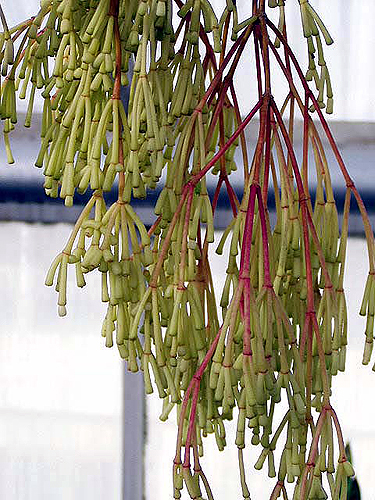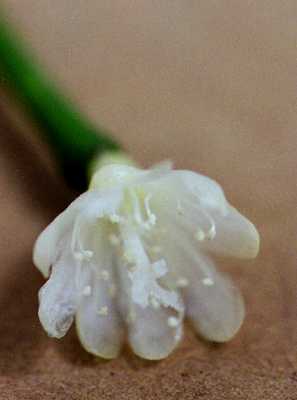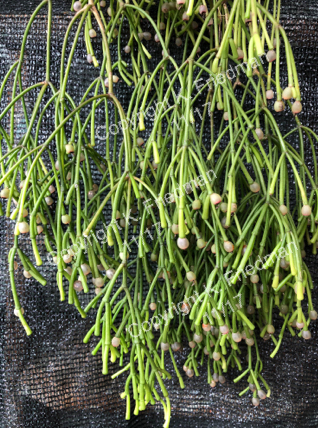| Rhipsalis
clavata F A C Weber, Rev. Hort. 64: 429. 1892 |
|
|
R. clavata, Brussels Botanical Garden © KAF Desc from B&R 1923
forma clavata DISTRIBUTION. Brazil (Rio de Janeiro, SE Sao Paulo): epiphyte in Atlantic forest, sea level to c. 1600 m altitude. forma delicatula (Lofgren) Barthlott & N.P. Taylor |
This species is much like Hatiora and it was really referred to Hariota at one time by Weber, himself. Schumann gives only one locality for it, but Dr. Rose found it on Corcobado in Rio de Janeiro, altitude 465 meters, growing on branches of trees, and on this plant the description has been partly based. Weber's manuscript name, Hariota clavata, has appeared only as a synonym of this species (Monatsschr. Kakteenk. 5:172. 1895). From Bradleya 13: This species has often been compared with Hatiora spp. on account of its vegetative similarities. However, unlike these it does sometimes produce the extension shoots of indeterminate growth that characterize all species of Subgenus Erythrorhipsalis, although such shoots are much shorter than, for example, in the related R. campos-portoana. From Bradleya 13
© Marcelo A.K. Fontana
|


